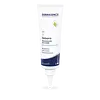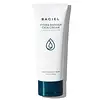What's inside
What's inside
 Key Ingredients
Key Ingredients

 Benefits
Benefits

 Concerns
Concerns

 Ingredients Side-by-side
Ingredients Side-by-side

Water
Skin ConditioningCanola Oil
EmollientGlycerin
HumectantOctyldodecanol
EmollientPersea Gratissima Oil
Skin ConditioningPropanediol
SolventHydrated Silica
AbrasivePolyglyceryl-6 Stearate
EmollientNiacinamide
SmoothingSerenoa Serrulata Fruit Extract
Skin ConditioningTocopheryl Acetate
AntioxidantPyridoxine Hcl
Skin ConditioningBrassica Campestris Sterols
EmollientZinc PCA
HumectantRheum Rhabarbarum Extract
Skin ConditioningSalicylic Acid
MaskingIsatis Tinctoria Leaf Extract
Skin ConditioningBisabolol
MaskingTocopherol
AntioxidantHelianthus Annuus Seed Oil
EmollientHumulus Lupulus Extract
AntimicrobialPolyacrylate Crosspolymer-6
Emulsion StabilisingPentylene Glycol
Skin ConditioningGlyceryl Stearate
EmollientPolyglyceryl-6 Behenate
Emulsion StabilisingEthyl Ferulate
AntioxidantPhenoxyethanol
PreservativeHydroxyacetophenone
AntioxidantLactic Acid
BufferingSodium Hydroxide
BufferingCitric Acid
BufferingParfum
MaskingWater, Canola Oil, Glycerin, Octyldodecanol, Persea Gratissima Oil, Propanediol, Hydrated Silica, Polyglyceryl-6 Stearate, Niacinamide, Serenoa Serrulata Fruit Extract, Tocopheryl Acetate, Pyridoxine Hcl, Brassica Campestris Sterols, Zinc PCA, Rheum Rhabarbarum Extract, Salicylic Acid, Isatis Tinctoria Leaf Extract, Bisabolol, Tocopherol, Helianthus Annuus Seed Oil, Humulus Lupulus Extract, Polyacrylate Crosspolymer-6, Pentylene Glycol, Glyceryl Stearate, Polyglyceryl-6 Behenate, Ethyl Ferulate, Phenoxyethanol, Hydroxyacetophenone, Lactic Acid, Sodium Hydroxide, Citric Acid, Parfum
Centella Asiatica Extract
CleansingButylene Glycol
Humectant1,2-Hexanediol
Skin ConditioningNiacinamide
SmoothingCetearyl Olivate
Cetearyl Alcohol
EmollientCaprylic/Capric Triglyceride
MaskingCetyl Ethylhexanoate
EmollientSorbitan Olivate
EmulsifyingCoco-Caprylate/Caprate
EmollientPrunus Amygdalus Dulcis Oil
Skin ConditioningCeramide NP
Skin ConditioningCeramide Ns
Skin ConditioningSodium Hyaluronate
HumectantCeramide AP
Skin ConditioningCeramide As
Skin ConditioningHydroxypropyltrimonium Hyaluronate
Hydrolyzed Hyaluronic Acid
HumectantSodium Acetylated Hyaluronate
HumectantHyaluronic Acid
HumectantCeramide EOP
Skin ConditioningPotassium Hyaluronate
Skin ConditioningHydrolyzed Sodium Hyaluronate
Skin ConditioningSodium Hyaluronate Crosspolymer
HumectantPhytosphingosine
Skin ConditioningAcetyl Hexapeptide-8
HumectantGlyceryl Caprylate
EmollientArginine
MaskingAllantoin
Skin ConditioningCaprylyl Glycol
EmollientEthylhexylglycerin
Skin ConditioningDipotassium Glycyrrhizate
HumectantHydrogenated Lecithin
EmulsifyingAdenosine
Skin ConditioningSodium Acrylates Copolymer
Glyceryl Stearate Se
EmulsifyingGlyceryl Stearate
EmollientCarbomer
Emulsion StabilisingLecithin
EmollientStearic Acid
CleansingPanthenol
Skin ConditioningCholesterol
EmollientWater
Skin ConditioningCentella Asiatica Extract, Butylene Glycol, 1,2-Hexanediol, Niacinamide, Cetearyl Olivate, Cetearyl Alcohol, Caprylic/Capric Triglyceride, Cetyl Ethylhexanoate, Sorbitan Olivate, Coco-Caprylate/Caprate, Prunus Amygdalus Dulcis Oil, Ceramide NP, Ceramide Ns, Sodium Hyaluronate, Ceramide AP, Ceramide As, Hydroxypropyltrimonium Hyaluronate, Hydrolyzed Hyaluronic Acid, Sodium Acetylated Hyaluronate, Hyaluronic Acid, Ceramide EOP, Potassium Hyaluronate, Hydrolyzed Sodium Hyaluronate, Sodium Hyaluronate Crosspolymer, Phytosphingosine, Acetyl Hexapeptide-8, Glyceryl Caprylate, Arginine, Allantoin, Caprylyl Glycol, Ethylhexylglycerin, Dipotassium Glycyrrhizate, Hydrogenated Lecithin, Adenosine, Sodium Acrylates Copolymer, Glyceryl Stearate Se, Glyceryl Stearate, Carbomer, Lecithin, Stearic Acid, Panthenol, Cholesterol, Water
Ingredients Explained
These ingredients are found in both products.
Ingredients higher up in an ingredient list are typically present in a larger amount.
Glyceryl Stearate is a mix of glycerin and stearic acid.
It is used to stabilize the mixing of water and oil ingredients. By preventing these ingredients from separating, it can help elongate shelf life. It can also help thicken the product's texture.
As an emollient, it helps soften skin and supports barrier-replenishing ingredients.
In cosmetics, Glyceryl Stearate is often made from vegetable oils or synthetically produced.
This ingredient may not be fungal-acne safe
Fun fact: The human body also creates Glyceryl Stearate naturally.
Learn more about Glyceryl StearateNiacinamide is a multitasking form of vitamin B3 that strengthens the skin barrier, reduces pores and dark spots, regulates oil, and improves signs of aging.
And the best part? It's gentle and well-tolerated by most skin types, including sensitive and reactive skin.
You might have heard of "niacin flush", or the reddening of skin that causes itchiness. Niacinamide has not been found to cause this.
In very rare cases, some individuals may not be able to tolerate niacinamide at all or experience an allergic reaction to it.
If you are experiencing flaking, irritation, and dryness with this ingredient, be sure to double check all your products as this ingredient can be found in all categories of skincare.
When incorporating niacinamide into your routine, look out for concentration amounts. Typically, 5% niacinamide provides benefits such as fading dark spots. However, if you have sensitive skin, it is better to begin with a smaller concentration.
When you apply niacinamide to your skin, your body converts it into nicotinamide adenine dinucleotide (NAD). NAD is an essential coenzyme that is already found in your cells as "fuel" and powers countless biological processes.
In your skin, NAD helps repair cell damage, produce new healthy cells, support collagen production, strengthen the skin barrier, and fight environmental stressors (like UV and pollution).
Our natural NAD levels start to decline with age, leading to slower skin repair, visible aging, and a weaker skin barrier. By providing your skin niacinamide, you're recharging your skin's NAD levels. This leads to stronger, healthier, and younger looking skin.
Another name for vitamin B3 is nicotinamide. This vitamin is water-soluble and our bodies don't store it. We obtain Vitamin B3 from either food or skincare. Meat, fish, wheat, yeast, and leafy greens contain vitamin B3.
The type of niacinamide used in skincare is synthetically created.
Learn more about NiacinamideWater. It's the most common cosmetic ingredient of all. You'll usually see it at the top of ingredient lists, meaning that it makes up the largest part of the product.
So why is it so popular? Water most often acts as a solvent - this means that it helps dissolve other ingredients into the formulation.
You'll also recognize water as that liquid we all need to stay alive. If you see this, drink a glass of water. Stay hydrated!
Learn more about Water